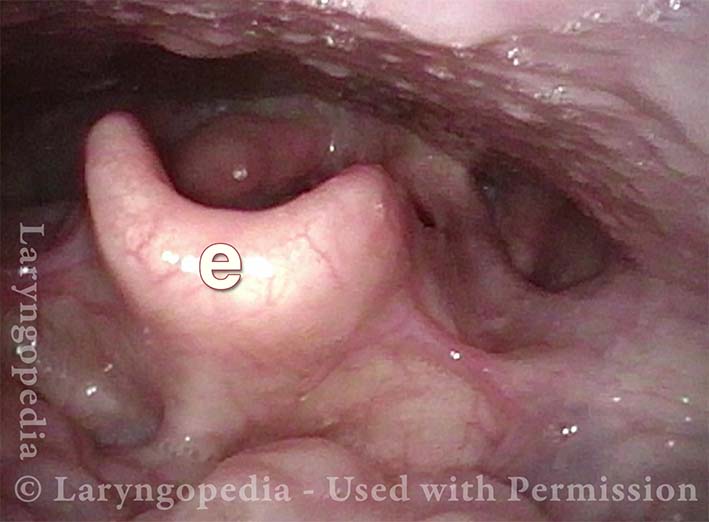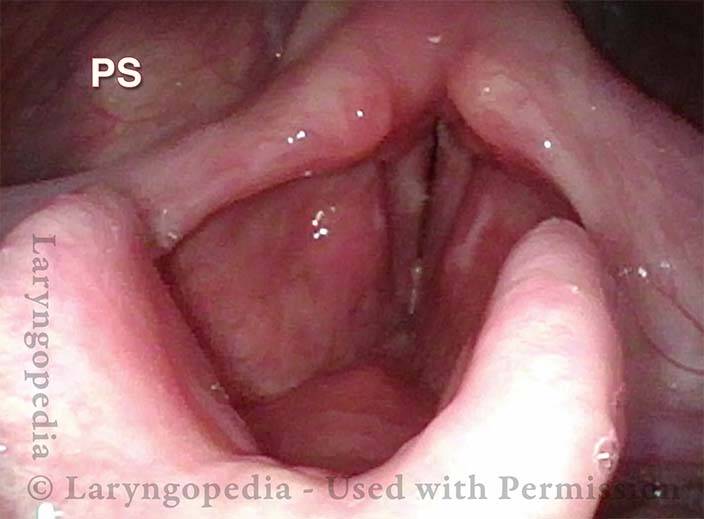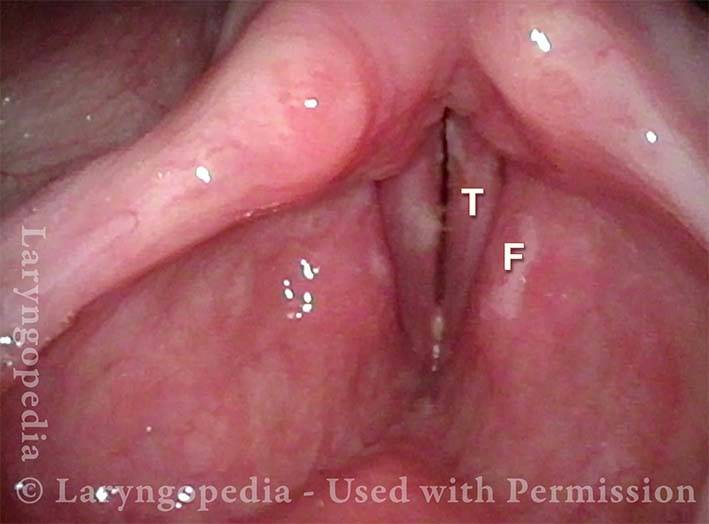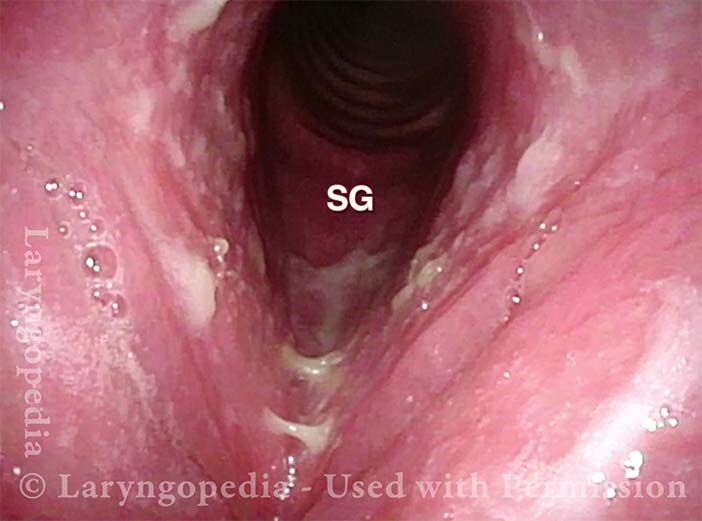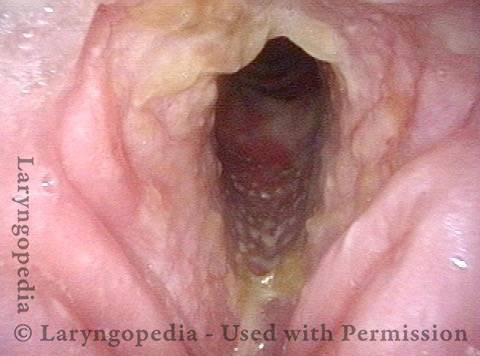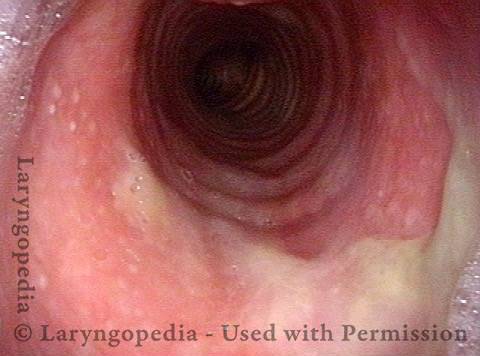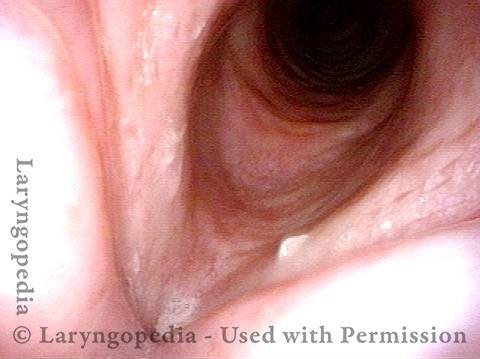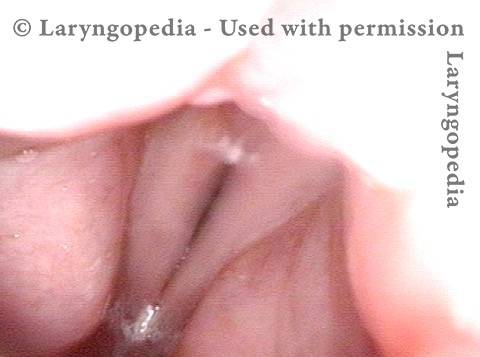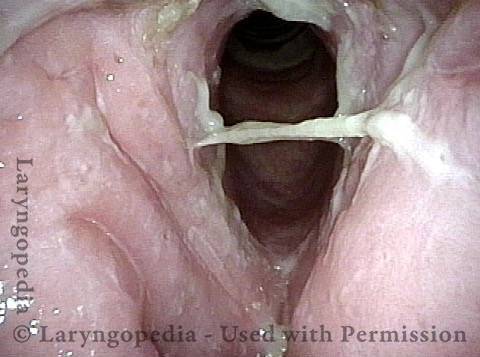Bacterial Laryngitis (can be acute or chronic)
Bacterial laryngitis is an infection of the vocal cord mucosa by bacteria (not a virus or fungal organism). During this infection, mucus produced in the larynx is usually colored yellow, green, or brown. This can occur in any person as an acute, self-limited infection.
Treatment
Bacterial laryngitis typically resolves on its own with supportive measures like hydration and relative voice rest. If it continues unabated more than 5 days or so, or if there is a critical need for voice (such as for an upcoming performance), antibiotics can be prescribed. Definitive resolution of chronic bacterial laryngitis is more difficult.
Vibratory Injury of Overuse? No, Acute Bacterial Laryngitis
This young man is a musical theater performer. His voice change occurred three weeks before this examination, apparently due to heavy (performance) voice use during a viral upper respiratory infection. He is no longer blowing his nose or nasally congested, nor is his throat sore, but his laryngitis continues.
The initial suspicion is that his hoarseness might be due to vibratory injury from overuse during the original viral infection. Instead, examination shows intense erythema and infected secretions fairly focally within the larynx.
Since the entire episode is approaching 3 weeks in duration, and due to an important upcoming performance, the obvious choice is to treat with an antibiotic.
Laryngopharynx (1 of 4)
Laryngopharynx (1 of 4)
Endolarynx (2 of 4)
Endolarynx (2 of 4)
Intense erythema (3 of 3)
Intense erythema (3 of 3)
Acute bacterial laryngitis (4 of 4)
Acute bacterial laryngitis (4 of 4)
Chronic Bacterial Laryngitis
Chronic bacterial laryngitis is seen in persons who have undergone radiotherapy or who have an immune defect. The laryngitis can often be improved with antibiotics, and hydration, when dryness is part of the problem. It often recurs when antibiotics are discontinued. Sometimes chronic antibiotic administration is needed. Or, motivated patients may learn how to do laryngeal irrigations.
